
The C38 class was a class of steam locomotive built for the New South Wales Government Railways in Australia.

The Powerhouse Museum is the major branch of the Museum of Applied Arts & Sciences (MAAS) in Sydney, and owned by the New South Wales State Government

The New South Wales Government Railways (NSWGR) was the agency of the Government of New South Wales that administered rail transport in New South Wales, Australia, between 1855 and 1932.
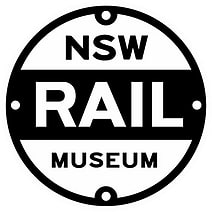
The NSW Rail Museum is the main railway museum in New South Wales, Australia. A division of Transport Heritage NSW, it was previously known as the New South Wales Rail Transport Museum (NSWRTM), Rail Heritage Centre and Trainworks.

3801 is a 4-6-2 steam locomotive operated by the New South Wales Government Railways between 1943 and 1974. It is arguably Australia's most famous steam locomotive, being the only one to have visited all mainland states and territories.

The Spirit of Progress was the premier express passenger train on the Victorian Railways in Australia, running from Melbourne to the New South Wales border at Albury, and later through to Sydney.

The Wolverton and Stony Stratford Tramway was a narrow gauge street tramway connecting Wolverton railway station and the Wolverton Works of the London and North Western Railway (LNWR) with Stony Stratford, Buckinghamshire. Although its financial situation was always precarious, except for a period of just under two years between 1889 and 1891, the line was in continuous operation from 1887 to 1926. Between May 1888 to December 1889, an extension also ran from Stony Stratford to Deanshanger in Northamptonshire, via Old Stratford. Unusually for a British street tramway, it was worked entirely by steam locomotives, and was the last of its type to remain in operation.
The railways of New South Wales, Australia, use a large variety of passenger and freight rolling stock. The first railway in Sydney was opened in 1855 between Sydney and Granville, now a suburb of Sydney but then a major agricultural centre. The railway formed the basis of the New South Wales Government Railways. Passenger and freight services were operated from the beginning. By 1880, there was a half hourly service to Homebush.

The New South Wales C36 class was a class of two-cylinder, simple, non-condensing, coal-fired superheated, 4-6-0 express passenger steam locomotives built by Eveleigh Railway Workshops and Clyde Engineering for the New South Wales Government Railways in Australia.

The C35 class was a class of steam locomotives built by Eveleigh Railway Workshops between 1914 and 1923 for the New South Wales Government Railways in Australia. Despite their elegant, somewhat English looking appearance, they suffered a long period of teething troubles and were poor performers, especially on long climbs.

The 17 class was a class of steam locomotive built by the Vulcan Foundry for the New South Wales Government Railways of Australia.
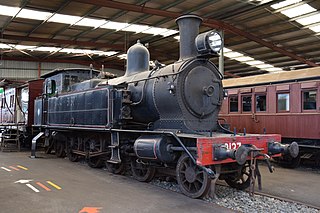
The C30 class is a class of steam locomotives built by Beyer, Peacock & Company and Eveleigh Railway Workshops for the New South Wales Government Railways (NSWGR) of Australia.
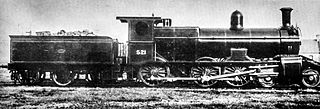
The C32 class was a class of steam locomotives built for the New South Wales Government Railways of Australia.

Locomotive 3642 is a two-cylinder, simple, non-condensing, coal-fired superheated, 4-6-0 36 class express passenger steam locomotive built for the New South Wales Government Railways in 1926 by Clyde Engineering. It is one of three 36 class locomotives that were preserved.
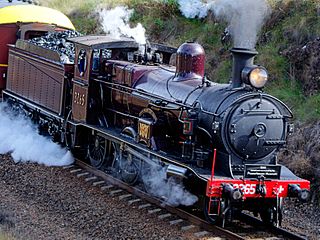
3265 is a preserved former New South Wales Government Railways C32 class steam locomotive. Built in 1902 by Beyer, Peacock & Company, England, it is owned by the Powerhouse Museum and based at the NSW Rail Museum, Thirlmere.

1243 is a preserved former New South Wales Government Railways Z12 class steam locomotive. Built in 1882 by Atlas Engineering Company, Sydney, it is on static display at the Powerhouse Museum.

The Z23 class was a class of steam locomotives built in 1891 for the New South Wales Government Railways in Australia.

The Z29 class was a class of steam locomotives built for the New South Wales Government Railways in Australia. They were used principally for goods transport up the steep gradients of rail track in the Blue Mountains, but also served on the Main South as far as Junee, the South Coast line as far as Waterfall and on Western lines as far as Mudgee and Wellington. Their introduction required cutting back some platforms as well as flattening their cylinder sides to achieve clearances. Over the years they lost some of their distinctive Baldwin appearance with reboilering with Belpaire boilers and acquisition of standard NSWGR chimneys and smokeboxes. The last two members of the class were delivered as 4 cylinder Vauclain compounds. The last withdrawn was 500 in April 1935, scrapped at Chullora in November 1937.
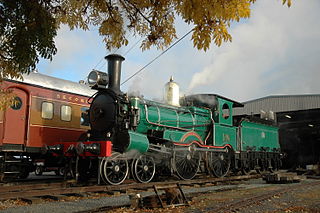
1210 is a preserved former New South Wales Government Railways Z12 class steam locomotive. Built in 1878 by Beyer, Peacock & Company, England, it is preserved at the Canberra Railway Museum.

The E.17 class was a class of patent long boiler steam locomotive built by the Robert Stephenson and Company for the New South Wales Government Railways of Australia.


























